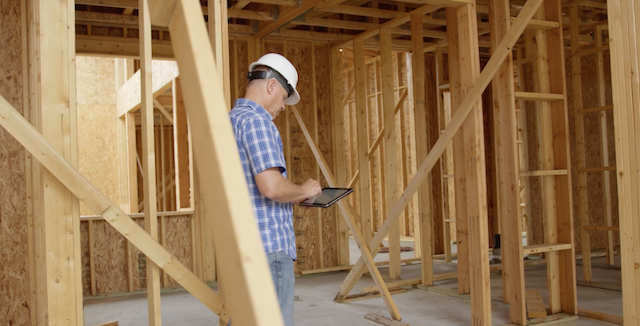It’s an indisputable fact: Technology is changing the world. The only questions are how much and and how fast. Technological advances are disruptive, and the construction industry is notoriously resistant to change. But, change it must.

The “change in mindset” has always been the “biggest challenge,” according to Arup Director Tim Chapman. “There are still many practitioners who want to protect the established ways of doing things, but the evidence from other industries where technology has taken hold is that soon it will be too big a draw to ignore.”
The construction industry is described as “innately conservative,” and builders want to be shown the advantages of new methods before giving up the old ways. As beautiful and functional as the “old ways” may have been, the future has arrived.
Realizing the Benefits
Home builders, architects and designers may have been slower to adopt new innovative construction technology than those in other fields, but on the modern jobsite, new methods have demonstrated value in terms of communication, scheduling and cost savings. Construction professionals willingly acknowledge the advantages of Building Information Modeling (BIM), advanced tracking and monitoring capabilities, cloud-based record-keeping, instantaneous document transmission, digital ordering and processing of materials, and virtual reality.
Technology contributes to improved efficiency and quality in virtually all areas. Nearly 40% of builders cite the ability to determine consumer “patterns, trends and preferences” as a major benefit of emerging technology. Big data and analytics allow informed business decisions that cater to customer desires and increase the quality level of the product.
Technology can alleviate estimating and costing uncertainties, shorten construction schedules, assure a tighter “project life cycle,” allow better decisions to be made more quickly, reduce risk and boost productivity. It may be initially disruptive, but the advantages in terms of consumer satisfaction and financial benefit will be a major factor in acceptance, according to analysts, along with the opportunity to “mitigate the risk of a skills shortage across the industry.”
Where Will It All Lead?
Drones, robotics, 3-D modeling and printing, virtual reality, artificial intelligence (AI), the internet of things (IoT) — all of the now-available innovative technology — can be employed to overcome challenges in the world of design and construction.
There is no doubt that drones and robots can perform some potentially dangerous tasks that currently require specially-trained or equipped personnel. Using non-human labor for such work can eliminate inherent health and safety concerns, speed up building projects and potentially save lives as well as dollars.
AI and IoT are frequently cited as the way of the future, ushering in an age of digital programming and remote control that has possibilities on the building site as well as in homes and offices.
Globally, innovation has introduced some startling projects: a steel pedestrian bridge in Amsterdam produced through 3-D printing, and printed homes and office buildings in China and Dubai. While these are not mainstream projects, they serve to illustrate the depth and breadth of new techniques.
Continuing Impact of Innovation
Those ideas that only a few years ago seemed impossible dreams are fast becoming not only possible, but reality. Innovative technologies will affect not only how we do business, design and construct homes and offices, commercial buildings and offices, highways and cities, but how we live and interact with other people and with the environment.
At Aterra, we feel the “excitement,” and we work diligently to accept, understand and utilize beneficial technology. We look to the future with confidence as we strive to be more responsive to customer wants and needs, more attuned to builder concerns and environmental issues, and more open to new tech possibilities.
Today, we have just scratched the surface of what is possible: The future may portend such things as “self-healing houses,” momentous new energy sources, more sustainable buildings, and a new flexibility of space utilization.


